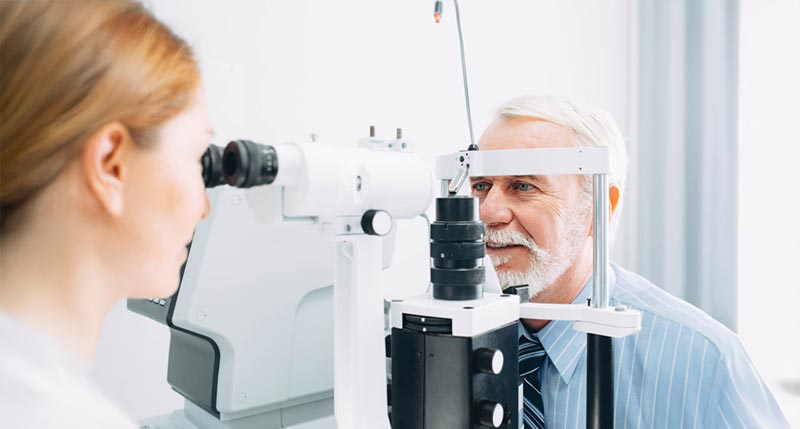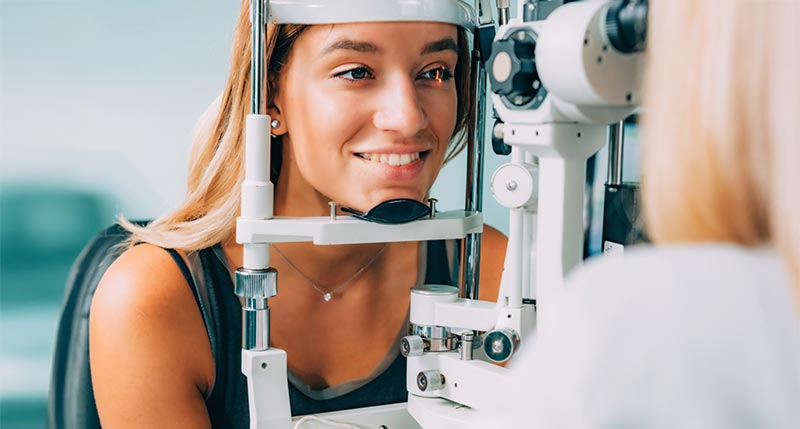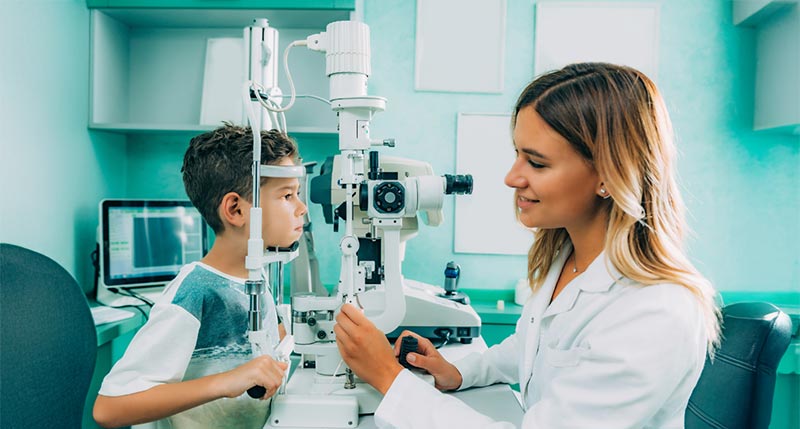Of the five human senses, the eyes are our most important sensory organs, helping us perceive up to 80% of the impressions and input we use to make sense of our surroundings. While other animals rely more heavily on their senses of smell―think of how important smells are to your dog or cat―the complexity of the human eye and the percentage of our brains dedicated to our sense of vision make our eyes the primary sense organ in human beings.
When that sense is compromised, it can be devastating. Vision loss so extreme that it can’t be corrected with prescription glasses, contact lenses, medication or surgery is known as Low Vision. The World Health Organization defines Low Vision as having less than 20/70 vision in a person’s “better eye” with the best possible correction.
Following are some common causes of Low Vision:
- Age-related Macular Degeneration. As its name indicates, in some people, the macula—or center of the retina—deteriorates with age. Since that central area of the retina enables sharp focus on objects right in front of our faces, it controls what we see in the center of our vision. Macular degeneration can impact the ability to drive, recognize faces, read and perform any fine-detail work. It basically makes a blind spot right in front of our eyes, which can be devastating. Macular degeneration is the leading cause of blindness in people over the age of 50 and causes about half of low vision cases.
- Glaucoma is a grouping of eye disorders that damage the optic nerve over time, causing vision loss. The gradual damage is typically due to high internal fluid pressure in the eye, resulting from a build-up of fluid. This build-up occurs when the eye produces too much fluid or there are issues with the drainage or flow of fluid out of the eye. Glaucoma is the second-leading cause of blindness in the U.S. It’s critical to have eye pressure checked regularly to catch the disease early, when it can be controlled with medication or surgery than can help to slow and minimize vision loss.
- Retinitis Pigmentosa (RP). This group of eye diseases progressively destroys both night vision and peripheral vision (side vision) by damaging the light-sensitive cells called rods and cones in the retina, the light-sensitive lining in the back part of the eye. The first symptom of this inherited disease is night blindness, and is often first observed in the teenage or young adult years. Sadly, patients diagnosed with retinitis pigmentosa usually progress to total blindness, often by age 40.
- Diabetic Retinopathy, found in up to 45% of people diagnosed with diabetes, causes gradual damage to the retina and can lead to total blindness if it isn’t treated. The high blood sugar levels experienced by diabetics can cause damage to the body’s blood vessels, including those in the eye. When tiny capillaries in the eye leak blood and other fluids, the retina swells and causes blurry or cloudy vision. Regulating blood sugar levels is the most important treatment to minimize the damage done by this condition, though laser and other surgical procedures can slow its progression.
- Amblyopia, also known as lazy eye, is a lack of central vision development in one eye that usually develops before age 6. Though it’s not due to any eye health problem, sometimes vision in one eye simply fails to develop normally in childhood. Early diagnosis and correction are key to reversing this condition, which is why babies should have a comprehensive eye exam with an optometrist by age 6 months and again when they turn 3. If left untreated until adulthood, it’s often impossible to improve or reverse the condition.
- Traumatic Brain Injury, which includes head traumas, stroke and brain injuries, can cause significantly blurred vision, a change to the visual field, eye misalignment, depth perception problems, glare sensitivity and reduced visual acuity.
- Cataracts, which occur when the lens inside the eye becomes so cloudy that light can’t reach the retina at the back of the eye, cause general loss of vision. Cataracts are caused by long-term exposure to the sun’s UV rays, injury, genetics and disease, and usually occur with advancing age. In a healthy eye, a cataract can be removed surgically and replaced with an intraocular lens implant to restore vision. For those with additional eye disease, cataract surgery isn’t always possible, resulting in low vision.
When caught in the early stages, many of the diseases and conditions that cause low vision can be controlled or their progression slowed by interventional medicines, surgeries and treatments. It is critical to catch these sight-stealing diseases and conditions in the very earliest stages, when treatments can provide the highest level of benefit. An annual comprehensive eye exam is the most important thing you can do to help ensure that you enjoy your best possible vision now and for the future.





